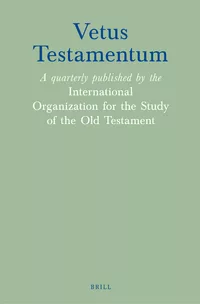https://doi.org/10.1163/15685330-bja10164
이 논문은 아모스서의 송영(doxology)를 분석하며, 바다·산·바람·하나님의 거처의 기원에 대한 성경 및 고대 근동의 통념과는 다른 논쟁적 세계 기원관을 제시한다고 주장한다. 특히 아모스 5:8d와 6:9c에 반복되는 “바다의 물을 불러 지면에 쏟으시는 이”라는 구절에 주목한다. 기존 연구가 이를 원초적 홍수, 쓰나미, 혹은 레반트 지역의 폭우로 해석해온 데 비해, 본 논문은 문맥에 따라 이를 우주론적·창조론적 의미로 해석한다. 이어지는 본문 요소들도 이 해석과 긴밀히 연결되어, 아모스 독솔로지의 통합적이고 논쟁적인 관점을 부각한다. 이러한 새로운 해석은 아모스서 독솔로지의 형성 시기와 구성 과정에 대한 이해에도 중요한 함의를 지닌다.
The paper explores the doxologies in the book of Amos, arguing that they articulate a polemical viewpoint distinct from prevailing biblical and ancient Near Eastern notions about the formation of the sea, mountains, wind, and God’s abode. Central to the comprehension of this cosmogony is the recurring phrase in Amos 5:8d and 6:9c, “(He) who summons the waters of the sea and pours them on the surface of the earth.” While previous scholars have understood this phrase as referring to the primeval Flood, a tsunami event, or Levantine torrential rain, the present paper suggests a cosmogonic interpretation, in line with its context. Subsequent elements in the same series of texts are interlinked with this portrayal, emphasizing the unified—and polemical—perspective of the doxologies. This new explanation also has ramifications for the dating and composition of the doxologies in the book of Amos.






